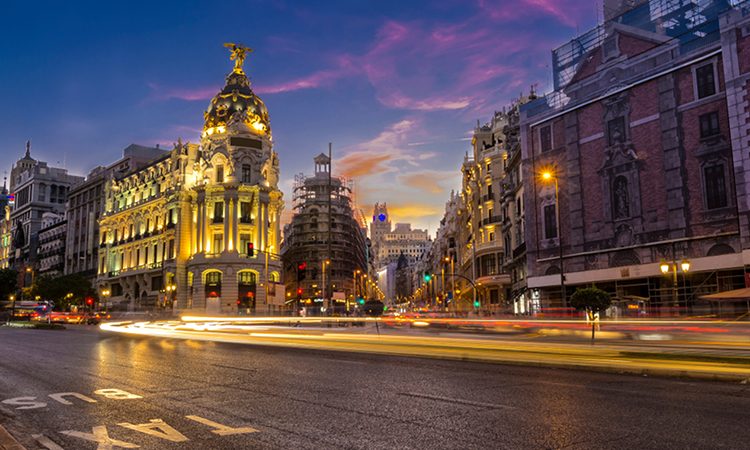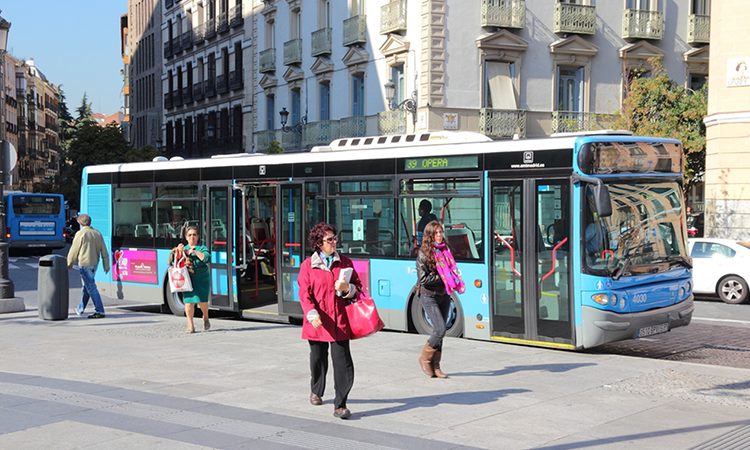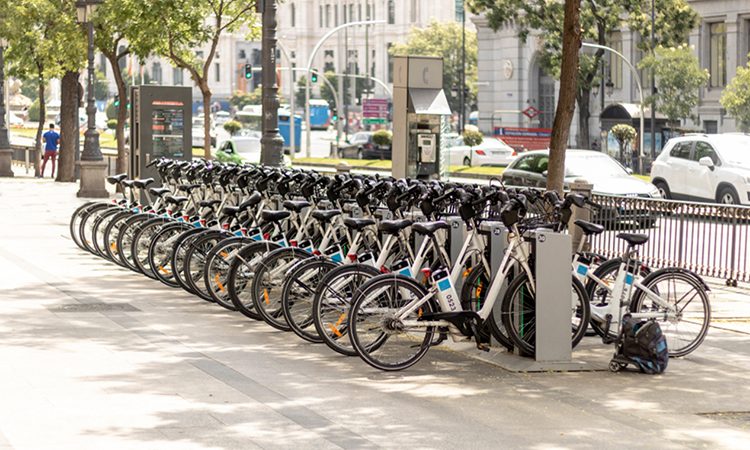Madrid 360: Sustainable and accessible mobility for all
- Like
- Digg
- Del
- Tumblr
- VKontakte
- Buffer
- Love This
- Odnoklassniki
- Meneame
- Blogger
- Amazon
- Yahoo Mail
- Gmail
- AOL
- Newsvine
- HackerNews
- Evernote
- MySpace
- Mail.ru
- Viadeo
- Line
- Comments
- Yummly
- SMS
- Viber
- Telegram
- Subscribe
- Skype
- Facebook Messenger
- Kakao
- LiveJournal
- Yammer
- Edgar
- Fintel
- Mix
- Instapaper
- Copy Link
Posted: 30 March 2023 | Dolores Ortiz Sanchez - City of Madrid | No comments yet
Dolores Ortiz Sanchez, Director General of Mobility at Madrid City Council, provides an in-depth look into the Spanish capital’s Madrid 360 Sustainable Mobility Plan and explains how it will help the city to reduce congestion, improve active travel connectivity and enhance public transport infrastructure.


The Madrid 360 Sustainable Mobility Plan (2022-2030), which was approved in June 2022, is the planning instrument that determines Madrid City Council’s sustainable mobility policies for the coming years.
The SMP 360 Madrid is part of the provisions of Article 101 of Law 2/2011, as of 4 March 2023, on Sustainable Economy, especially about its guiding principles, and, in accordance with the different planning instruments provided therein, particularly that relating to infrastructure, transport, energy saving and efficiency. It is also aligned, in every way, with the Spanish Strategy for Sustainable Mobility.
At the same time, it complies with the Agreement of the Municipal Plenary of 7 July 2020, by which the Villa Agreements were approved; a document which had the purpose to re-activate the City of Madrid after the COVID-19 pandemic. These agreements include measures aimed at promoting sustainable mobility.
The SMP 360 pursues a markedly intermodal mobility system, which enables the distribution of the current and future demand among all modes of transport, to respond before 2030 in order to achieve four ambitious objectives: a 20% to 25% reduction in traffic, which means a notable reduction in congestion that affects the mobility of the city; a 65% CO2 emissions reduction from 1990 by 2030, as established in the COP25 agreement; compliance with the environmental objectives established by the European Union (EU) in terms of air quality; and, finally, the reduction by 50% of deaths and serious victims in traffic accidents in accordance with the requirement of the EU.
In order to achieve more sustainable mobility in this type of travel, the plan encourages the regional and state administrations to implement planned metropolitan public transport improvements (subway extensions, train and HOV lanes, deterrence of parking at origin, etc.). In addition, it promotes the creation of intermodal hubs in the accesses to the city to facilitate modal change.
Putting the plan into action
To achieve these objectives, the plan establishes actions that make the modes complementary, and transhipment a very competitive alternative. Thus, 10 strategic lines are structured and deployed by typology, in 32 measures, embodied in more than 100 actions, some for the short- to medium- term (before 2025) and others in the long-term (before 2030).
From an implementation pace perspective of the proposed transformative measures, we are aware that, in terms of mobility, ‘little by little does not mean little’ and that, nevertheless, prudence in its application, ‘without haste, but without pause’, allows for the transformation of some citizens’ inefficient mobility habits into sustainable ones, which improves the mobility system. With it, the quality of life, the environment, safety and the economy of our city. In addition, these rhythms are better matched with the start-up of the new infrastructures integrated in the plan.


Public transport and multimodality drive the main strategic lines of the plan
The plan’s main development vector is public transport and multimodality. Madrid is a world leader in public transport and there is no doubt that, by enabling comfortable and safe transfers, the potential of the collective mode increases exponentially.
The progressive metropolisation of the mobility in the Madrid region means that 25% of the more than nine million daily journeys made within the city have origin or destination outside the municipality. This percentage reaches 44% if we only consider those done by car, from which the need to further develop a metropolitan public transport is derived.
Thus, the plan includes all the infrastructures planned by other administrations – expansion of the Metro network and intermodal car parks under the competence of the regional government, improvement/extension of commuter trains by ADIF and BUS-HOV lanes in the access radials by the Ministry – as essential actions to increase the contribution of public transport in the mobility of the city and especially in the relations of Madrid with its metropolitan area.
In addition, all the actions foreseen in the compelling Strategic Plan of the Empresa Municipal de Transportes de Madrid (EMT Madrid) are included. It involves a total modernisation of the service, and of the entire bus fleet, as well as a notable growth of the bus lane network (250 km by 2030), especially outside the M-30 (the innermost ring road of the city), which is where it is less widespread. We cannot forget that if in the central districts, car trips represent only 13%, this percentage rises to 30% on the city periphery. Thus, increasing the efficiency of public transport with segregated bus lanes will allow a service increase of 20% with the same resources.
The plan’s target is to increase the use of public transport from 36% to 41%, especially in those trips to or from outside the M-30. Other measures to promote public transport are also included, such as free public transport on certain days when higher levels of congestion or pollution are expected.
The pedestrian and the bicycle
However, where the plan makes a firm commitment is for the expansion of pedestrianisation and the improvement of its quality and safety. Thus, it proposes the creation of new multimodal axels, in which segregated bike lanes are integrated. The Mobility 360 plan is committed to intervening in a minimum of 30km of the basic pedestrian network. A Master Plan of Pedestrian Mobility and Public Spaces will include these interventions. Clear examples of these proposals include the re-modelling of Joaquín Costa, the bike lane in Paseo de la Castellana, the new design of Pedro Bosch Street and the Southwest Green Corridor.
In addition to the development of these main axels, the following is already being enabled – the scope and management of the Zero Emission Zones for all districts of the city, clean spaces and pedestrian priority.
Furthermore, a radical commitment to the functionality and safety of cycling mobility and personal mobility vehicles (such as e-scooters) will be made. We would like to end by pointing out the insecurity that is often felt by pedestrians due to the fear of a surprising eruption of a bicycle or scooter, as well as our aim to protect these users from accidents with other vehicles. Thus, before 2030, the segregated cycling network will be expanded by 250km, promoting clean micro-mobility. Moreover, the successful BiciMAD system will be increased to 10,000 bicycles before 2030, reaching all districts of the city, and stimulating shared mobility.
Let’s not forget parking
As a dissuasive method for private vehicles, in addition to competitive and sustainable transport alternatives, we relay in the environmental management of the Madrid regulated parking (SER). Anyhow, we cannot forget that there are trips that are solely reliant on the car, due to poor connection with other sustainable modes or the lack of its users, which cannot be overlooked.
At destiny, the implementation of regulated parking outside the M-30 ring, will prioritise the available street for the residents and will nudge into public transport a portion of the car trip that are still being made despite the availability of competitive modes of public transport.
The SMP-360, does also plan to continue the PAR program, to trace 5,000 parking spots before 2030, that has been lagging since the last economic crisis. This will allow the reduction of the deficit of residential parking and impulse public space improvement.


Lower emission vehicles
The eruption of new electric vehicles (cheaper and with more autonomy) eases the transformation of the private vehicle fleet.
The plan expects to accelerate this transformation with three promotional and encouragement actions:
- Subsidies for the acquisition of these vehicles
- Deployment of new charging points
- Access restriction to the more polluting vehicles (Environmental category A) starting from the most central districts, up until their total ban in 2024, as stated in the new Sustainable Mobility local regulations.
Urban distribution of goods
The Plan gives special attention to actions aimed at the optimisation of the urban distribution of goods, by enabling micro-hubs in the denser urban areas, and logistics platforms in the most peripheral areas of the city. Both must facilitate load breakage, both to senders, distributors, and receivers.
Enabling these transfer points is complemented by a monitoring and control system of the loading and unloading areas that allow both their surveillance and the optimisation of the distribution routes. The plan proposes the development of the action programme that must be agreed with all the stakeholders involved, to minimise the distribution cost for each of the agents, and of course for the city council.
Smart mobility
The SMP-360 also relies on new technologies. ‘Smart Mobility’ elements are included for mobility planification and management. This includes enhancement of the sensors’ systems, new modelling instruments and multimodal mobile apps.
Road safety
In terms of road safety, the SMP-360 includes all the measures that have been derived from the recently approved Road Safety Strategic Plan (2021-2030).
The plan invites many economic players to become involved in mobility improvement, especially encouraging workers and businessmen to continue with the measures that were successful during the COVID-19 pandemic, such as remote work, demand stratification, parking management and shared vehicles.
Looking to the future
A series of indicators have been set, for each strategic line, as a continuous monitoring mechanism to ascertain the continuous evaluation throughout the validity of the plan.
With this plan, Madrid, as a city open to the world, will provide, through multimodality and dialogue guarantee, its citizens and millions of visitors with the social right to mobility in the best available conditions of safety, environmental quality, economic competitiveness and energy efficiency.


Related topics
Accessibility, Active travel, Air Quality, Micro-mobility, Mobility Services, Multimodality, Passenger Experience, Public Transport, Sustainable Urban Transport
Related modes
Bikes & Scooters, Bus & Coach
Related cities
Madrid
Related countries
Spain
Related organisations
City of Madrid, Empresa Municipal de Transportes de Madrid (EMT Madrid)
Related people
Dolores Ortiz Sanchez








